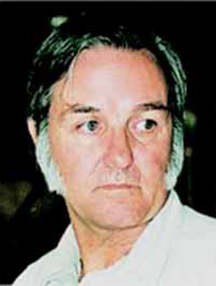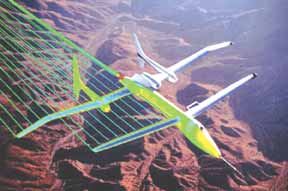 Burt Rutan Engineer, Adventurer, Entrepreneur Scaled Composites, Inc. (Detailed Bio) Rutan’s visions for the future – including an individual small aircraft transportation system, space travel for “the rest of us” and a technology-enabled super society – will stir the imagination of any audience. Lively and witty, he inspires audiences with his enthusiasm for what individuals with vision can achieve. Burt Rutan is a gifted engineer, adventurer and entrepreneur. Designer of the record-breaking Voyager - the first airplane to circle the world non-stop and without refueling - Rutan’s story is the stuff of American folklore. Like all of his airplanes, the Voyager employed some of the most advanced designs in use today. Hollywood has showcased his sleek, avant-garde designs in three films: Death Race 2000, Octopussy and Iron Eagle III. “I’m doing essentially the same kind of thing I did when I was as a kid except I’m doing it with rocket ships and airplanes and special vehicles.” Rutan’s company, Scaled Composites (named for its trademark use of carbonfiber composites), has developed a diverse array of projects, including the catamaran for Dennis Connor in the America’s Cup challenge and the gondola for Virgin Atlantic’s Richard Branson’s attempted non-stop balloon flight around the world. Rutan also developed an allcomposite car body for General Motor’s 100 mpg show car. The success of Scaled Composites owes itself partly to Rutan’s philosophy that the best ideas come from the collaborative efforts of small, closely-knit project teams. By maintaining his entrepreneurial edge, Rutan has streamlined costs while stimulating creativity and innovation. “An engineer in a normal aerospace company,” says Rutan, “gets to work on two or three airplanes in his whole career. We have developed over forty new types since 1972.” Rutan has received many awards, including the Chrysler Award for Innovation in Design, “Engineer of the Year” by Design News, the British Gold Medal for Aeronautics, the Collier Trophy and the Presidential Citizen’s Medal. |
Our Future: The Super Renaissance February 21st, 2003 “It’s primarily the environment that you’re able to put yourself in... “But the bottom line is to try new things. “Even if you’re not sure it’ll work. . . "That’s the basis of innovation." |
 Proteus Sets Three World Altitude Records Mojave, California, November 1, 2000: On October 25 and 27, 2000, Scaled Composites set three unofficial (pending ratification by NAA/FAI) world altitude records with the Model 281 Proteus aircraft. The three records were peak altitude (62,786 feet), sustained altitude in horizontal flight (61,919 feet), and peak altitude (of 55,878 feet) with a 1000-kg payload. These altitudes significantly exceeded the existing records in Class C-1.E, Group III. Takeoff gross weights for the two flights were 8,962 lb. And 11,319 lb., respectively. The Scaled crew of Mike Melvill and Bob Waldmiller were at the controls for these record-setting flights. Since the flights were considered envelope expansion, the crew wore full pressure suits, which were provided by NASA through the Dryden Flight Research Center under the Environmental Research Aircraft and Sensor Technology program. The flights were conducted under the sponsorship of the NASA Office of Earth Science with funding provided by the NOAA/DoD/NASA Integrated Program Office. This sponsorship includes evaluation of the Proteus aircraft as an atmospheric science and remote sensing airborne platform at altitudes as high as 60,000 feet. The flights were conducted from the Mojave, California Civilian Flight Test Center and within and above the confines of the R-2508 complex. Further information on Proteus is available at www.scaled.com. |